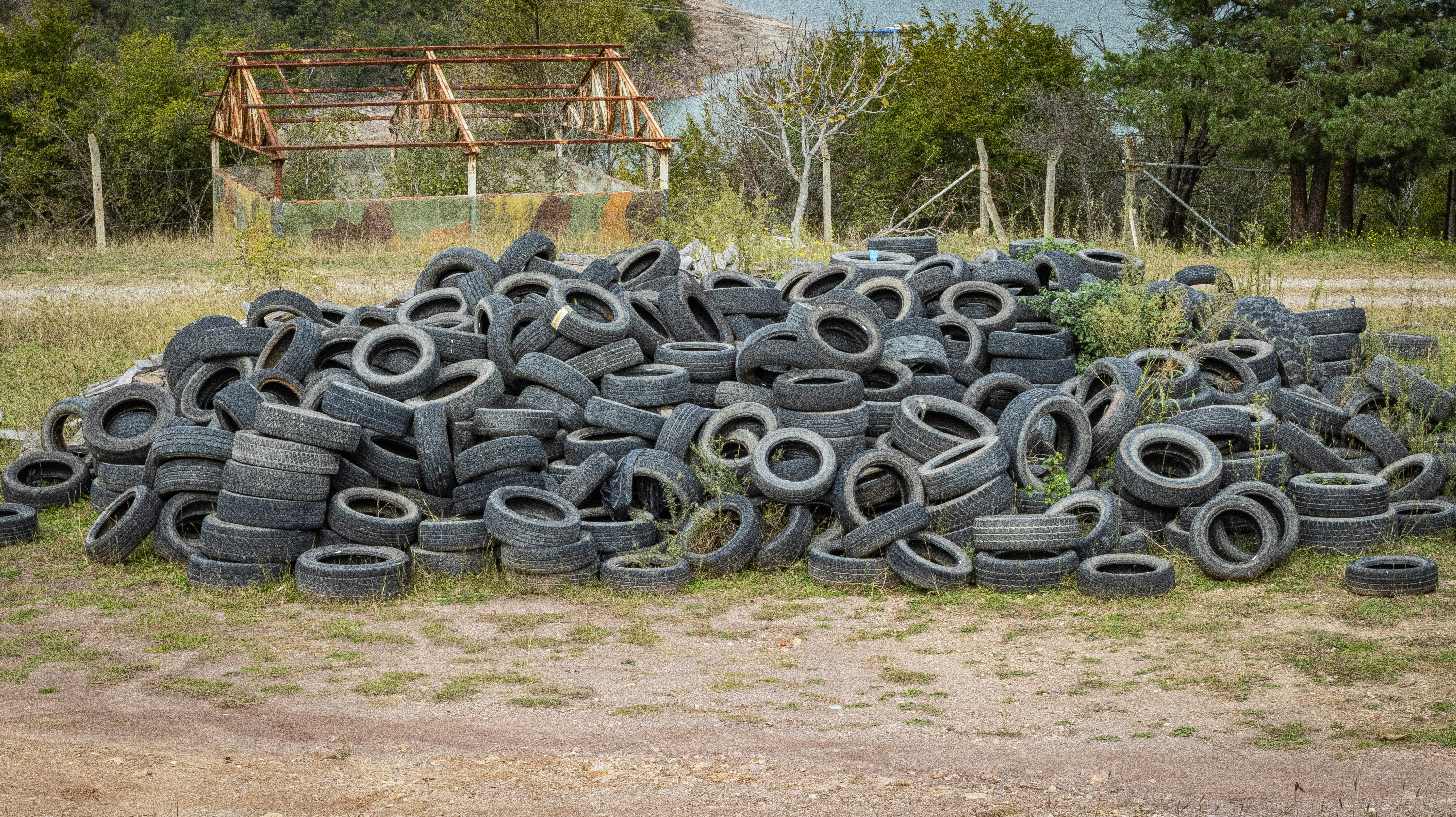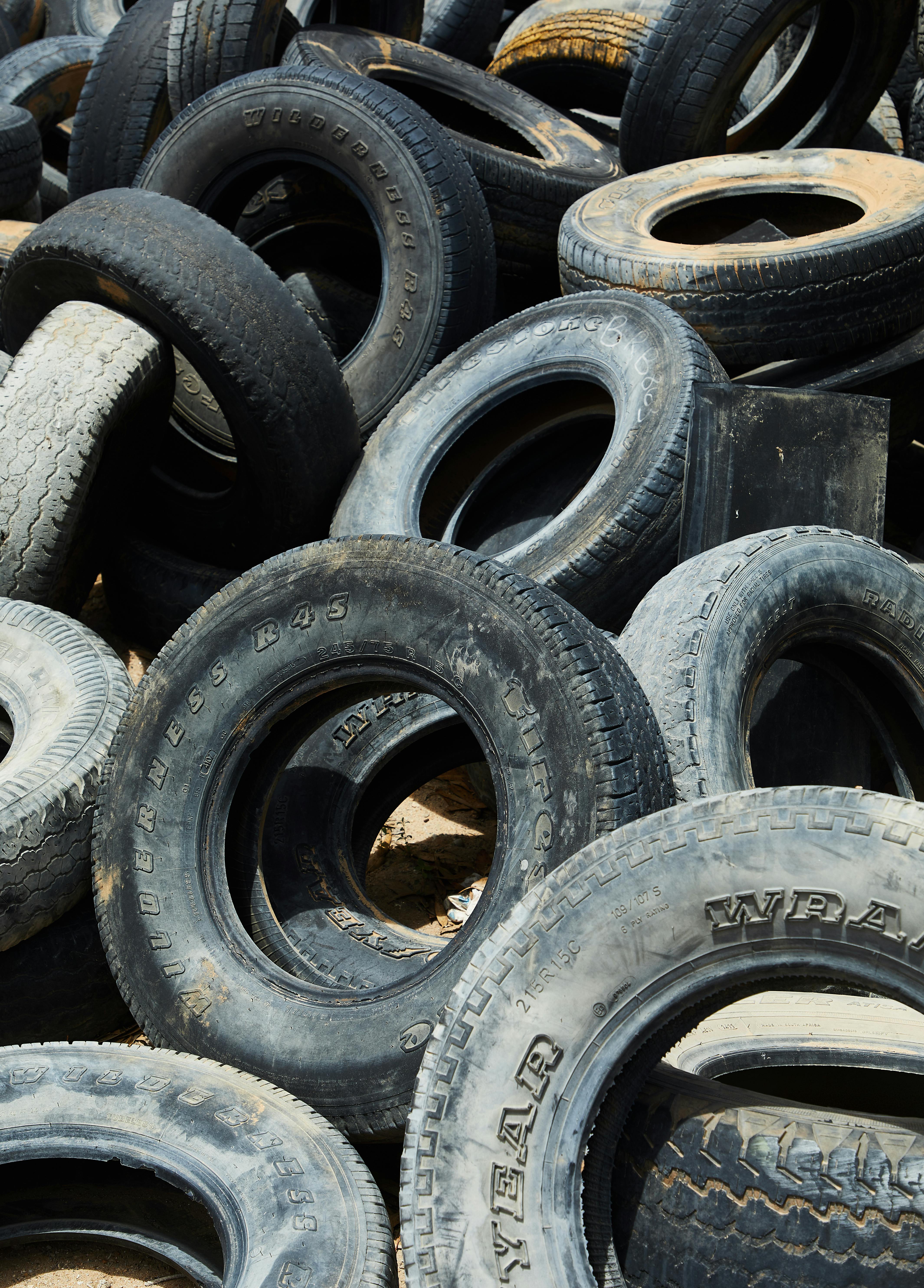Disposal of end-of-life tyres has become an environmental issue due to the non-biodegradable nature of the tyre composition. This leads to improper disposal methods, which mostly end up in landfills. Being non-biodegradable, the tyres will accumulate in landfills over time, creating space constraints. It also poses fire hazards and pest infestations in the landfills.
One recycling method of used tyres is through pyrolysis. It allows thermal decomposition of the tyres, allowing it to be used as an energy source and at the same time creating carbon black that can be reused to make the tyres.
Contact Anergy today to chat about our High-Temperature Pyrolysis.
Tyre pyrolysis is a thermal process that chemically breaks organic materials down in accordance with its chemical structures. The fixed carbon and ash content of the organic materials will remain as solid whereas the volatile content of the bio materials will be released as a gas mixture.
The solid product is known as biochar (Button). Tyres, which have a relatively high fixed carbon content, are a good source for carbon black production.
The gas product is known as syngas (Button). The syngas can be converted into other useful forms such as electricity or fuels.
The condensable part of the syngas is known as pyrolysis bio-oil or tars which are generally produced in conventional pyrolysis processes.
The higher the temperature of the pyrolysis, the more chemical breakdown of the material will occur resulting in a more stable biochar and the less condensable portion of the syngas that will be produced giving a richer syngas.

Anergy’s patented High Temperature Pyrolysis (HTP) allows for a more thorough chemical decomposition of the tyres feed. Compared to conventional pyrolysis, HTP allows for reduced tars, emissions and improved product quality.
Not all components of used tyres are pyrolyzable.
Upon crumbing the used tyres, the metal components can be removed and recycled leaving only the pyrolyzable components.
| Tyre HTP PRODUCTS* |
|||
|
BIOCHAR YIELD |
CHAR FIXED CARBON CONTENT |
SYNGAS YIELD AVAILABLE FOR CONVERSION |
SYNGAS CALORIFIC VALUE |
| 30-40% | >80% | 40-60% | >35MJ/kg |

Anergy’s tyre HTP offers several advantages over conventional pyrolysis, including both environmental and economic benefits. Tyre has a huge potential in serving as an energy source and with no shortage of availability. It will also help in sustainable waste management. These benefits are further outlined in the sections below.
One major issue with conventional tyre pyrolysis is the sulfur that is contained in the pyrolysis oil product. Sulfur is part of the composition of tyres and when going through the pyrolysis process, sulfur containing compounds will be formed which will be mixed with the condensed pyrolysis oil.
Anergy HTP minimises this issue as no pyrolysis oil is produced. The syngas will be cleaned to remove inorganics, including sulfur compounds, as wastewater, prior to utilisation of the syngas.
Combustion of the cleaned syngas will significantly lesser environmentally polluted SOx is produced.
Less sulfur poisoning for any subsequent reactions on the cleaned syngas for conversion into fuel.
Char product from tyre pyrolysis is unlikely to be able to be sequestered as a carbon sink due to the presence of lead, which could contaminate the soil.
Converting the char into recovered carbon black is one alternative in which the carbon black could be reused to make tyres.
Anergy’s HTP process will enable the production of high-quality char that can be jet milled into recovered carbon black.
The higher temperature operating allows a higher carbon purity on the char product, which is a requirement for carbon black.
End-of-life tyres will take up space in landfill due to the compact and bulky nature.
In addition, tyres are non-biodegradable, meaning they will not decompose naturally.
The accumulation of tyres will create water stagnation which causes insects and pests infestation which could lead to diseases.
Anergy HTP offers a solution to process end-of-life tyres and at the same time produce useful products which are beneficial for the environment and for the economy.
The landfill space will not be occupied with the non-biodegradable tyres.